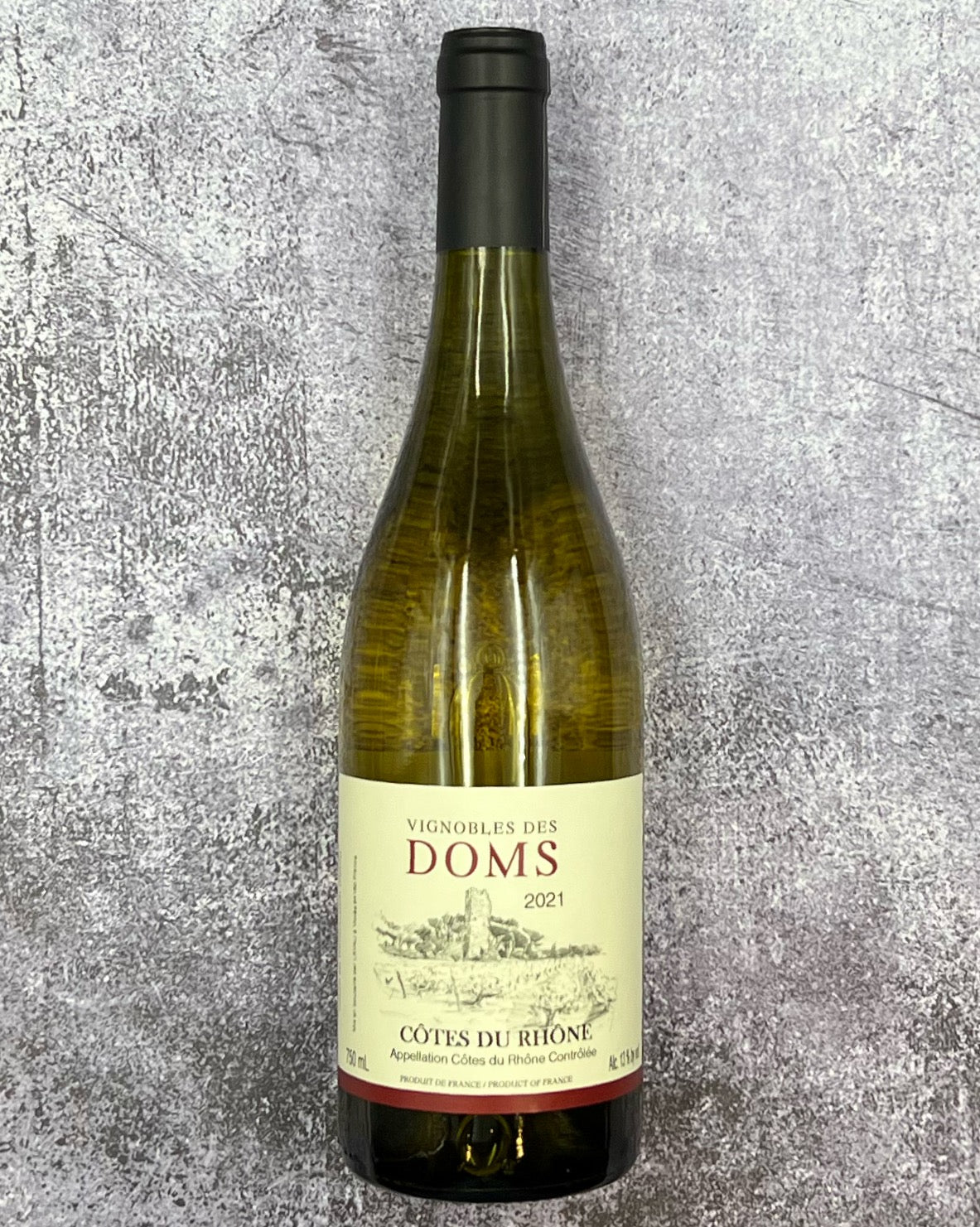From: Southern Rhône, France
Blend: 60% Grenache Blanc, 40% Viognier
Taste: This delightfully refreshing and thirst-quenching blend of Viognier and Grenache Blanc flaunts flavors of freshly picked stone fruit, sun-warmed citrus, and green pear. Aromas of breezy white flowers and Mediterranean herbs will transport you straight to the windswept slopes of the Rhône Valley.
Pairing: This balanced white wine pairs excellently with many dishes and occasions. Some inspiration ideas include seafood-centric dishes: grilled shrimp or shrimp scampi, fried/grilled/baked white fish like halibut or cod, and clams in broth with fresh baguette. Lighter poultry or vegetarian meals are also fantastic options. Grilled or roasted chicken served with baguette and salad, Mezze platters with freshly made hummus and pita, avocado and chickpea sandwiches or pasta, takeout tacos, and Mediterranean fare (check out the recipe below), in general, make for delicious, easily accessible pairings.
Chicken Koftas With Lime Couscous
By Nik Sharma
About. It’s fairly common for smaller, family-run European producers to focus so fully on winemaking that they don’t take the time to submit their wines to critics or invest in marketing materials or a website. Although there is virtually no information out there about Vignobles des Doms, the quality of their 2021 Côtes du Rhône Blanc really stood out to us when we tasted it. We like to think of this wine as a testament to the humble, hard-working winemaking families everywhere.
About Côtes du Rhône Blanc, Grenache Blanc, and Viognier
Côtes du Rhône is a regional appellation in the Rhône Valley that includes 171 communes, almost all situated in the Southern Rhône. White wines from the Côtes du Rhône appellation can be made from any of the following varieties and are known to be generous, fleshy, and expressive: Grenache Blanc, Claudette, Bourboulenc, Roussanne, Marsanne, Maccabeo, Rolle (Vermentino), Viognier, Piquepoul, or Picardy.
Grenache Blanc, which makes up 60% of this blend, is commonly planted not only in the south of France near the Mediterranean (in the Southern Rhône and the Languedoc-Roussillon), but also in northeast Spain as Granacha Blanca and generally warmer climates across the New World. It is thought to have originated in in Spain as a mutation of the red grape, Grenache Noir. Like Grenache Noir, its vines are hearty and fare well in warm climates with limited rainfall.
Also in the same vein as Grenache Noir, Grenache Blanc can have a tendency to hold higher levels of alcohol. Picking the grapes at the right time when they’ve reached optimal maturity levels and keeping fermentation levels low are both key winemaking moves to maintain the grape’s freshness. Care must also be taken to avoid oxidation during the winemaking process. Blending can also help to achieve balance in the finished wine, and Grenache Blanc is most often blended with Roussanne in the Southern Rhône. However, blends like this with 40% Viognier aren’t out of the ordinary. Other possible blending grapes include Vermentino (Rolle), Bourboulenc, Picpoul, Clairette, and Macabeu.
Viognier is an aromatic white variety that produces wines with hallmark aromas of apricots and peaches, and often full, textural palates. Thick-skinned Viognier grapes have naturally low acidity and require a great deal of sunshine to ripen properly, so like Grenache Blanc, it is also susceptible to high alcohol levels and low to medium acidity. That’s why the freshness you will taste in this blend is such a testament to great winemaking!
In the 1970s and 80s, the Viognier progressively moved south from its birth place in the Northern Rhône and into the south of France where it is often grown in the likes of the Languedoc to produce commercial, single-varietal wines and as a component in blended white wines, lending its heady perfume and full-body to the mix.

